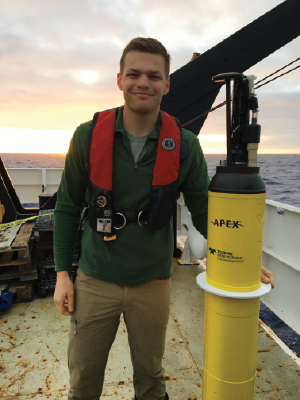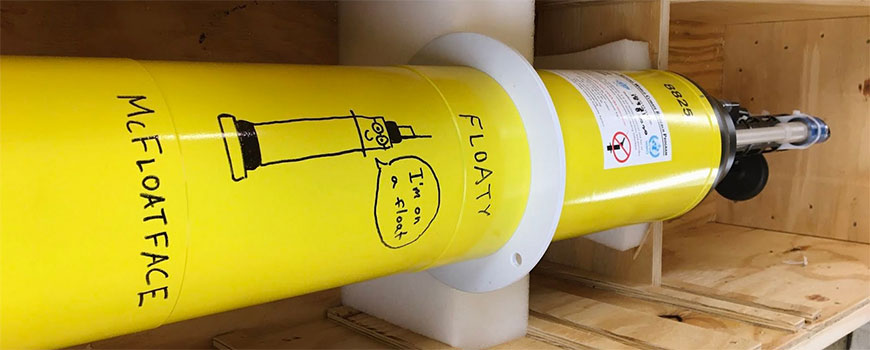
These floats, which are already reporting data, join a fleet of more than 150 such instruments measuring the physical, chemical, and biological properties of the Southern Ocean. This unique dataset has dramatically increased the spatial and temporal coverage of measurements in one of the most inaccessible and harsh environments on the planet. And in doing so, the float array has led to new discoveries about the oceanic uptake of carbon dioxide and oxygen, biological productivity, and polynya formation, among many other things.
Just as important as the scientific value of these float deployments, however, was the human impact. We had the opportunity to partner with several elementary and middle schools from around the country who each named a float through SOCCOM’s adopt-a-float program. I’ve heard from several teachers that their students are following the floats as they begin their journey, and have provided a way for the class to stay connected in this uncharted era of virtual education. Perhaps the floats can even serve as a source of inspiration amidst all the turmoil.
With the floats deployed, we now have a long journey to Norfolk, Va. I’m writing this from somewhere in the middle of the Atlantic Ocean, while sitting at a picnic table on the ship’s fantail. The ocean extends to the edges of the horizon in every direction. Gone are the seabirds and dolphins near the coast. Here it seems desolate, empty. But thousands of meters below us is an even more foreign world, where strong currents traverse undersea mountain ranges, and internal waves the size of skyscrapers break and mix the waters close to the seafloor. These are the forces that the SOCCOM floats will reckon with as they drift around collecting data. And in light of how minuscule they are compared to the vast expanse of sea around me, I think it’s incredible that these floats are changing our understanding of the ocean and its interaction with the atmosphere.
I hope everyone on land is managing to stay healthy and sane. I’ll be thinking of you, from one isolated place to another.
- Channing Prend is a graduate student in the laboratory of Scripps physical oceanographer Lynne Talley. This story is adapted from the SOCCOM at Sea blog






修改评论